Breezer Repack Team - Review
The Breezer name is one that will likely ring a bell for those familiar with the history of our sport, with Joe Breeze himself playing an important role in the birth of what we now call the mountain bike. Breezer isn't shy about touting that connection to those early days, either, proudly stating that they are ''The world's first and oldest mountain bike brand,'' in large text on their website, but we're looking at something much more contemporary here: the 160mm travel, aluminum framed Repack and its novel looking MLink suspension design. The bike's name comes from one of the earliest timed downhill races that took place back in the 1970s in Marin, California, but the $4,699 USD Repack has actually been designed as more of a long legged trail bike than a no-compromise descender, even if its 32lb 10oz weight might not make the obvious.
Breezer Repack Details
• Intended use: trail / all-mountain
• Wheel size: 27.5''
• Rear wheel travel: 160mm
• MLink suspension design
• Frame material: aluminum
• Tapered head tube
• Press-fit BB92 bottom bracket
• ISCG 05 chain guide tabs
• Weight: 32lb 10oz (w/o pedals)
• MSRP: $4,699 USD
• Intended use: trail / all-mountain
• Wheel size: 27.5''
• Rear wheel travel: 160mm
• MLink suspension design
• Frame material: aluminum
• Tapered head tube
• Press-fit BB92 bottom bracket
• ISCG 05 chain guide tabs
• Weight: 32lb 10oz (w/o pedals)
• MSRP: $4,699 USD
Frame Details
The aluminum Repack frame has a distinctive look to it, and the bright yellow highlights on the top and down tubes give it a slim appearance, at least from a distance. Get an up close look at the bike, though, and you'll see that Breezer isn't playing about here - this thing looks like it would survive being dropped out of a plane from 30,000 feet. Its hydroformed tubes feature heavy shaping, and the top tube falls down low towards the back of the bike to provide loads of crotch clearance, while the tall seat mast compensates to allow for proper seat height. The front triangle's curvy tubing is in contrast to the rectangular and much more industrial looking tubes that Breezer uses at the back of the bike, and the 12 x 142mm rear end and brake caliper post mount appear to be burly enough to do double duty on a dirt bike.
Breezer has split the bike's cable routing between the underside of the down tube (rear derailleur and brake) and the underside of the top tube (front derailleur and dropper post), but there is no provision for an internally routed dropper seat post on the 2015 bike. There's also no place to mount a water bottle cage inside the front triangle, which could be a big let down for anyone who doesn't always wear a backpack - the only bottle location being a long reach to the underside of the down tube. All of the other required boxes are checked off, though: tapered head tube, ISCG 05 chain guide mount (around a Press-Fit BB92 bottom bracket), and sealed bearings all around with aluminum pivot axles running through them.
The Repack's Suspension Explained
The 160mm travel Repack, as well as Breezer's 120mm travel Supercell, employ what the company is calling MLink suspension. The task of coming up with the design was granted to the Sotto Group, a collection of engineers who are responsible for a handful of other designs on the market right now, and the result is a rather unique looking four-bar layout that sees the rearmost pivot placed way out in the middle of the chain stay. It is, in effect, a dual link layout, but with longer links that we're used to seeing.
The MLink nomenclature is short for Mid Link, which makes sense when you spot the chain stay pivot halfway between the rear axle and front triangle, but why place it there instead of out next to the axle or close to the bottom bracket shell where we're used to seeing it? Breezer says that the reason comes down to wanting to build a more robust system, and that the MLink layout makes for less binding, less flex, and reduced pivot stress compared to more common designs.
Breezer claim that the more typical short link layout can make for all sorts of issues: ''Large rotations and rapid accelerations plus direction changes equal unhappy bearings. Additionally, extremely short links (think eccentrics) maximize the force the suspension system can exert on them, resulting in stiction issues, tolerance problems, accelerated bearing wear, and often catastrophic short link over-center issues.'' Now, there are a ton a different bikes on the market that use short links, most of them offering great performance without their suspension systems spontaneously combusting in the heat of battle, but Breezer is clearly confident that their MLink design offers something more.
Breezer claim that the more typical short link layout can make for all sorts of issues: ''Large rotations and rapid accelerations plus direction changes equal unhappy bearings. Additionally, extremely short links (think eccentrics) maximize the force the suspension system can exert on them, resulting in stiction issues, tolerance problems, accelerated bearing wear, and often catastrophic short link over-center issues.'' Now, there are a ton a different bikes on the market that use short links, most of them offering great performance without their suspension systems spontaneously combusting in the heat of battle, but Breezer is clearly confident that their MLink design offers something more.
| |||||||||||||||||||||||||||||||||||||||||||||||||||||||||||||||||||||
Climbing
Expectations for bikes like the 160mm travel Repack were pretty low just a few short years ago, with most people being happy if the bike weighed less than 35lb and was able to be ridden up gentle grades under the rider's own power. That's a bit of an exaggeration, but not by much, especially when you take into account today's high standards where we seem to want our mid-travel bikes to pedal up the hill with relative ease but still be downhill bikes when it comes time to have some fun. And if you're concerned about the first bit, you won't be disappointed with what the Repack brings to the table - this bike is an absolute demon on the climbs relative to its competition, and will even give lighter bikes with less travel a run for their money.
So what is it that makes the Repack so special on the ups? The efficiency of its MLink suspension has a lot to do with it, and the design is proficient enough under pedalling loads to allow the bike's designers to go with a relatively light compression tune. It's so good, in fact, that the bike's 32lb 10oz weight and slow rolling rubber feel like they both count for about as much as that sunset photo and accompanying inspirational quote that you posted on Instagram a few nights ago. It's rare for a 160mm travel bike to feel so energetic, and only Yeti's SB6C comes to mind as being comparable in this regard, with it and the Repack making most other machines in the same class feel as if their tires are filled with cement rather than air and a bit of tubeless sealant. This made the Breezer an easy choice for long days, and I had no qualms about reaching for it over other lighter, carbon fiber bikes when the day's plan involved five or six thousand feet of suffering spread over fifty or sixty kilometers. I never once felt the need to flip the FOX shock's CTD switch to the firmest mode, and I even routinely left the shock wide open, despite a lot of my climbs being of the steep, smooth fire road variety that nightmares are made of. The list of 160mm travel bikes that you can say that about is pretty short, but the Repack is on it. It's not a cross-country bike by any stretch of the imagination, but it also doesn't feel like you're being punished on the climbs for wanting to maximize your fun on the way back down.
 | It's still a 160mm travel bike, so don't expect to be carried to the top of steep, tricky pitches by winged angles wearing Breezer jerseys, but the Repack can be (slowly) steered around the tightest of switchbacks without much fuss, and it doesn't take a genius to get the bike up and over terrain that would trouble a lot of other bikes. |
The Breezer doesn't give up any ground when it comes to dicey climbs, either, and the mix of pedalling efficiency and relative technical prowess will see Repack owners scramble up things that are going to frustrate their friends on more downhill oriented machines. It's still a 160mm travel bike, so don't expect to be carried to the top of steep, tricky pitches by winged angles wearing Breezer jerseys, but the Repack can be (slowly) steered around the tightest of switchbacks without much fuss, and it doesn't take a genius to get the bike up and over terrain that would trouble a lot of other bikes. Firming up the very active FOX 34 by flipping the CTD dial to the middle setting is worth doing at times like these as it keeps you from having to lift up through the fork's sag when you need to move the front end around, but performance at these times seemed unaffected by doing the same to the Float CTD out back - best to just leave it either open or in the middle setting so you benefit from the improved traction. Front end lift is very minimal up steep trails, even with a 50mm stem in place of the stock 80mm unit that Breezer ships the bike with, so it also doesn't force you to do much other then keep turning the pedals over.
Is the Repack the best climbing 160mm travel bike out there? Given that I haven't spent time on every comparable bike, just a hell of a lot of them, I can't really call it the best, can I? What I can say, though, is that it is the best all around climbing package that I've ridden when talking about bikes of the same travel. It feels extremely efficient, and it can weave up the tightest of climbing tests with relative ease, all of which makes ascending just a little bit less of a pain in the ass than it would be on other 160mm travel bikes.
Descending and Suspension
That same quick and energetic feel on the gas when climbing also helps when the trail starts to level off or point down, and this, combined with the comparatively quick handling, makes for a machine that feels more BMX bike than downhill sled. As you can imagine, it adds up to a fun-loving bike when the trail asks you to bob and weave through trees, and it wouldn't be a stretch to say that the Repack feels closer to a bike with 20mm less travel and five pounds less mass in such settings. It's a finesse rider's bike, for lack of a better term, and a rider who chooses his lines and employs brains over brawn will get much more out of it than a rider who only uses the latter approach. No, the brute is only going to get shown the ground on occasion if he or she rides the Repack like a slacked out enduro race bike, even if the bike's travel numbers match other machines that were intended to do exactly that.
The Breezer's sharp front end is a huge help when things are tight or the speeds aren't too high, but it can feel a touch pointy when you let the bike run out over choppy ground. That was when I found myself making a lot of corrections as I worked to keep the Repack on my chosen line, and while that might sound a bit harsh, I'd sum it up by saying that the bike steers more like a capable trail bike than something I'd want to spend much time on in the bike park. Truth be told, that is exactly what the doctor ordered for many of the people who want to be on 160mm travel bikes - the handling is quick enough to not make things difficult when they're not going warp speed, while still being more than enough bike for the large majority of riders out there.
 | The Repack is more of a capable trail bike than an enduro race rig, and I'd much prefer to spend all day on it than any of the latest slacked out mini-downhill hill bikes when it comes to any ride worthy of being called an epic. |
The job of a 160mm travel bike is to inspire confidence and allow its rider unflinchingly hit pretty much anything on the average trail out there, especially if you're going to pay a weight penalty when getting said bike to the top of the mountain in the first place. Unfortunately, the Repack's MLink suspension design has about as much ramp-up as a highway running through the Canadian Prairies, which makes going with anything near 30% sag nearly impossible if you plan on leaving the ground during your rides. That's the number that I started off with, which isn't out of line for a 160mm bike, but the result was extremely hard bottoming moments on mere three and four foot drops, the very same relatively minor moves that don't see me hit the end of the shock's stroke on much shorter travel bikes running more sag. And I'm not talking about a 'soft' bottoming issue, but a clanging ''Holy shit, what was that?!" kind of thing that had me stopping to question if the drop was three feet or thirty feet. I should clarify that the actual performance of the FOX shock itself left nothing to be desired, with it being smooth, consistent, and active, but that the kinematics and shock tune that Breezer have gone with won't suit an aggressive rider.
Relaying the issue to Breezer revealed that they feel the bike's sweet spot is at 25%, although some Repack owners run as little as 20% sag. Both numbers seem too low when talking about a 160mm travel bike, but 20% sag did keep it from using up all of its travel in places where it most definitely shouldn't be, while 25% sag and the addition of a large volume spacer to the FOX shock's air can seemed to be the best compromise. The rear suspension still went to too deep into its travel too often for my liking, but I felt much more comfortable charging through rough terrain and jumps or drops than when I first rode the bike. Less sag means that the Repack won't stick to the ground as well as a bike that can easily run 30%, though, and the Breezer did feel a bit more skittery on loose or rough sections of trail.
So what's going on? ''By keeping the overall change of the shock rate/leverage ratio low, it lets the bike work well with a wide variety of shock tunes to tailor the bike to preference very easily,'' explained Brian McKinney, MTB Marketing Manager for Advanced Sports International. ''The design is supposed to both support the mid-stroke and still use full travel, something many other systems make you choose between. You can run more sag than the 25% by using the volume spacer, which you have already done, or by increasing boost valve pressure slightly. In speaking with the suspension designer he does not see an advantage in running more sag, and if the system had more of a rising rate it wouldn’t be possible to have all the tuning options.''
So what's going on? ''By keeping the overall change of the shock rate/leverage ratio low, it lets the bike work well with a wide variety of shock tunes to tailor the bike to preference very easily,'' explained Brian McKinney, MTB Marketing Manager for Advanced Sports International. ''The design is supposed to both support the mid-stroke and still use full travel, something many other systems make you choose between. You can run more sag than the 25% by using the volume spacer, which you have already done, or by increasing boost valve pressure slightly. In speaking with the suspension designer he does not see an advantage in running more sag, and if the system had more of a rising rate it wouldn’t be possible to have all the tuning options.''
That's all well and good, and it does make sense when it comes to suspension setup - I was able to use a volume spacer to provide more progression - but the bottom line is that there are more capable suspension designs out there for a rider who's pushing the limits on a 160mm travel bike.
Technical Report
• That 80mm Stem: We're notorious for complaining about companies spec'ing what we consider to be stems that are too long and handlebars that are too narrow, and many commenters have pointed out that there are plenty of riders and places in this world that don't require 50mm stems and 780mm handlebars. That's one hundred percent true, but, at the risk of offending even more readers than I usually do, I'd also argue that anyone who's riding a 160mm travel bike with an 80mm long stem is either way over-biked or has bought the wrong size frame. Breezer says that they're going to spec shorter stems in 2016, but riders who are looking at this year's Repack should swap out that long Ritchey steering rudder before leaving the bike shop.
• WTB Vigilante Tire: The tread pattern of WTB's aggro tires look pretty similar (but not the same) to what Schwalbe has come up with in the past, so it's no surprise that I found them to work quite well. They're obviously not exactly the same, though, but they offer the predictable handling and handfuls of traction that one would want to have when riding a 160mm travel bike. They also roll as fast as an extremely grippy tire does, which is to say that they don't roll fast at all. That's okay in my world, because I want a tire that's going to inspire me to try new lines and push my own limits when I'm riding a bike like the Repack.
• Shimano XT Drivetrain: Do I prefer eleven speed, single ring drivetrains? Yup. Did the Repack's XT ten speed, two-by drivetrain work just fine? Pretty much, and there's nothing to complain about when it comes to its shifting action. I did drop the chain a few times, though, which isn't ideal. The great pedalling Repack is a perfect candidate for a wide-range cassette conversion and narrow/wide chain ring, especially since the bike doesn't force a rider to spin an ultra-easy gear up steep pitches like some other 160mm machines do. More simple is more better, after all.
Pinkbike's Take:
 | Yes, a confident and aggressive descender is going to find the Repack's limits if they're pushing hard on rowdy terrain, a fact that means the Breezer isn't a great choice if your focus is on doing exactly that or a spot of enduro racing. But it isn't really fair to compare this bike to any of those near-purpose built enduro race bikes, because the Repack should really be thought of as being enduro-lite or a long legged trail bike rather than a 160mm party sled. The bike's travel is not the defining factor here, though, because there are very, very few machines in this travel bracket than can ascend as well as the Breezer, be it on technical terrain or fire road grinding, making it a great choice for anyone who would rather put in big days on a long-travel bike than spend their time riding lifts, shuttling, or chucking themselves off of things. - Mike Levy |
Visit the high-res gallery for more images from this review

About the Reviewer
Stats: Age: 34 • Height: 5'10” • Inseam: 33" • Weight: 165lb • Industry affiliations / sponsors: None Mike Levy spent most of the 90s and early 2000s racing downhill bikes and building ill-considered jumps in the woods of British Columbia before realizing that bikes could also be pedalled for hours on end to get to some pretty cool places. These days he spends most of his time doing exactly that, preferring to ride test bikes way out in the local hills rather than any bike park. Over ten years as a professional mechanic before making the move to Pinkbike means that his enthusiasm for two wheels extends beyond simply riding on them, and his appreciation for all things technical is an attribute that meshes nicely with his role of Technical Editor at Pinkbike.
Stats: Age: 34 • Height: 5'10” • Inseam: 33" • Weight: 165lb • Industry affiliations / sponsors: None Mike Levy spent most of the 90s and early 2000s racing downhill bikes and building ill-considered jumps in the woods of British Columbia before realizing that bikes could also be pedalled for hours on end to get to some pretty cool places. These days he spends most of his time doing exactly that, preferring to ride test bikes way out in the local hills rather than any bike park. Over ten years as a professional mechanic before making the move to Pinkbike means that his enthusiasm for two wheels extends beyond simply riding on them, and his appreciation for all things technical is an attribute that meshes nicely with his role of Technical Editor at Pinkbike.
Author Info:
Must Read This Week
Sign Up for the Pinkbike Newsletter - All the Biggest, Most Interesting Stories in your Inbox
PB Newsletter Signup
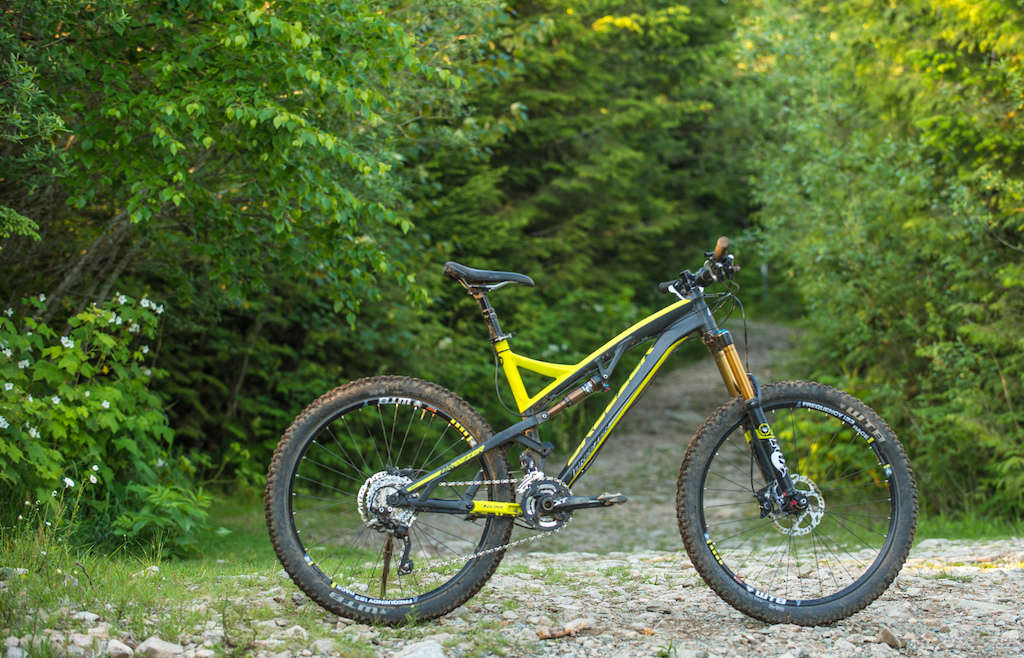



 The Repack's 160mm of rear wheel travel is controlled by Breezer's MLink suspension system from the Sotto Group.
The Repack's 160mm of rear wheel travel is controlled by Breezer's MLink suspension system from the Sotto Group.


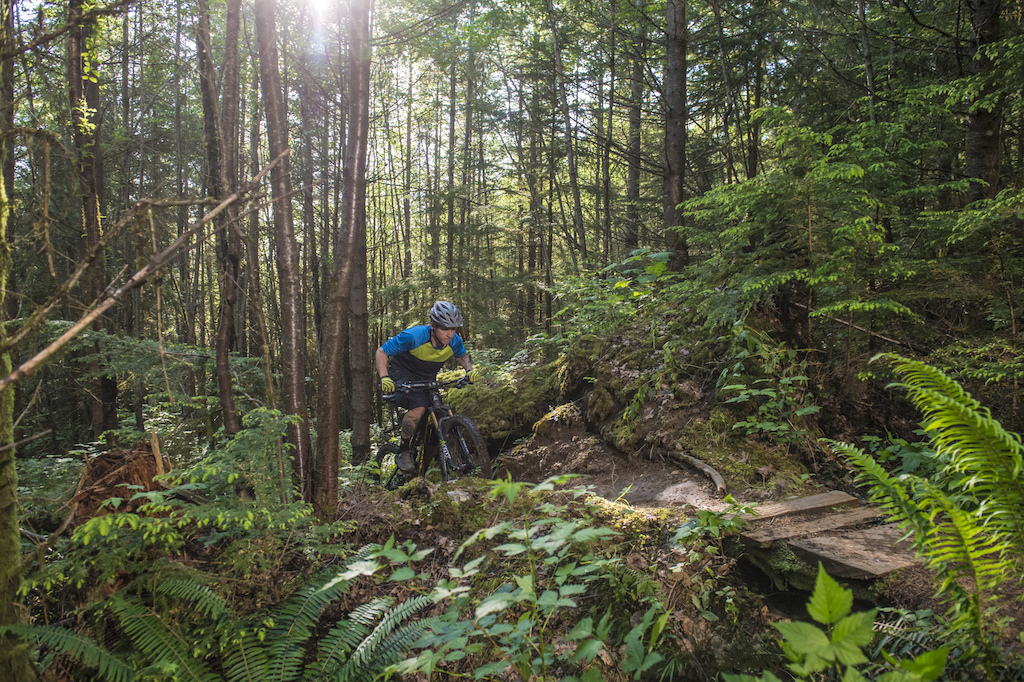
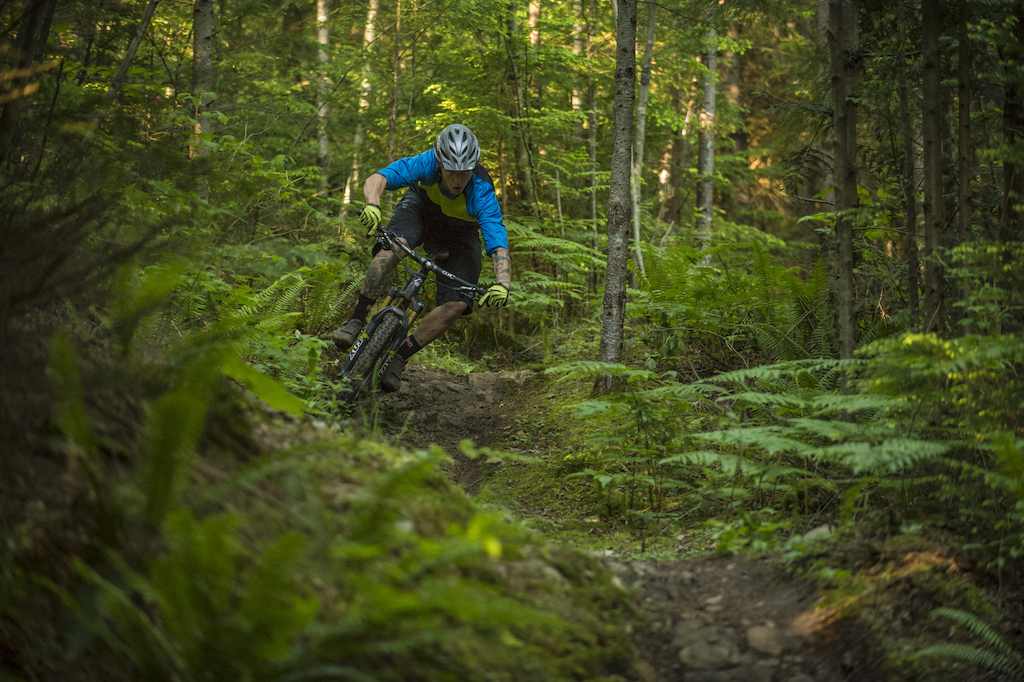
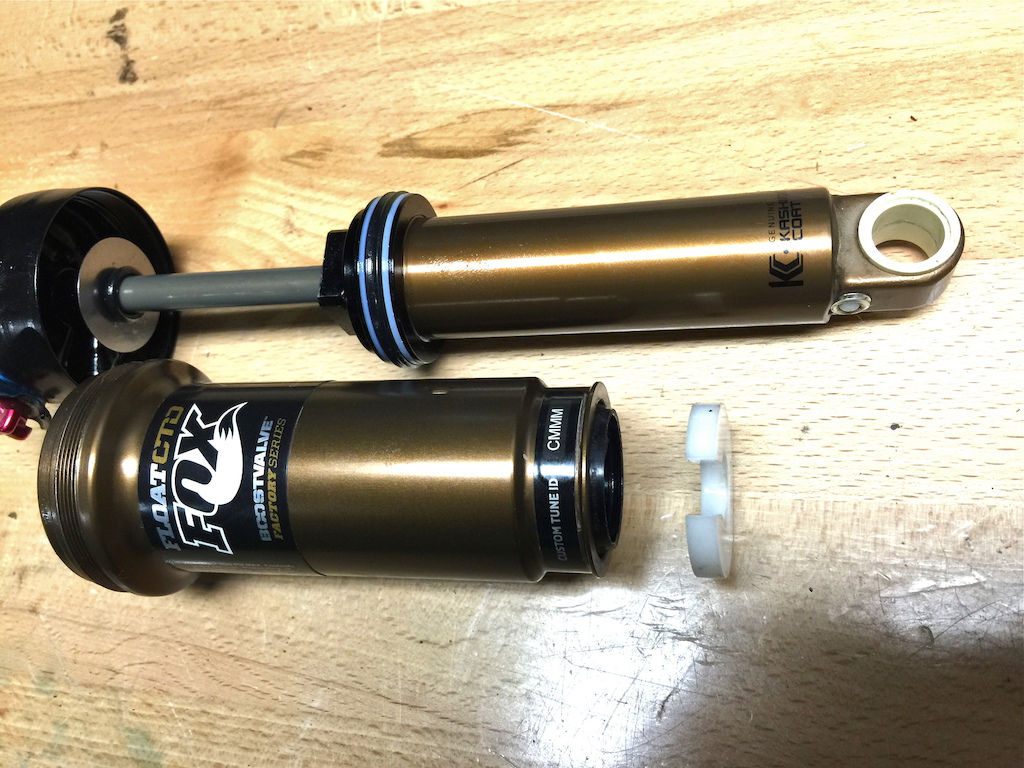
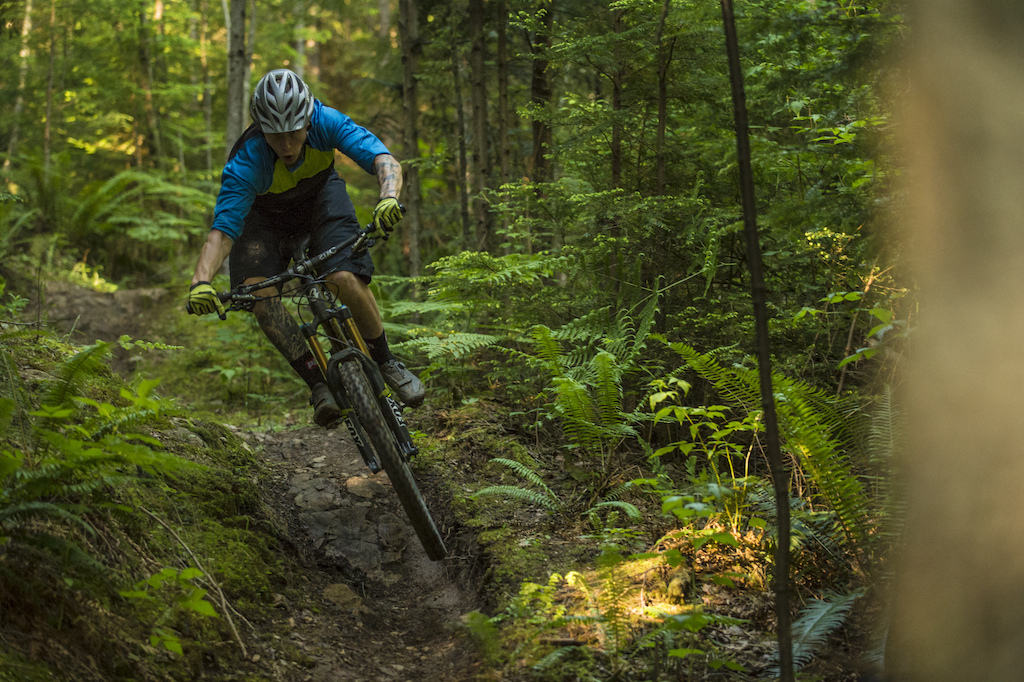


"How about we put it in the middle?"
"Done. Meeting over... beer o'clock!"
Also, due to the lower pivot location, it appears that there might not be any adequate or easy chainstay protection. "Klack. Klick-itty Klack" down the trail.
Is it a so-so descender compared to other 160mm or it just doesn't do well overall? What about the climbing? It's supposed to be pretty good... so how good is it? Good for a 160mm but nothing special overall or it beats everything 130mm+? Would a bike like a transition scout or a xprezo magic carpet outclass it on both the ups or downs or it's not really like that? Is it more like a good agressive 140mm would fare? If so, why make a bike with 160mm then?
Hard to tell. It's been a few reviews that left me with more question than answers.
As for the descending, I fit more in the finesse rider vein coming from a trials background but can also smash through rough trails on occasion. The descending portion of this review was exactly right in that it does bottom out rather quickly. For example, a fast 2-3 foot drop can bottom the suspension if you are a bit too over the rear. Doesn't happen very easily but it is very noticeable. Same drop on a Camber and I haven't felt it bottom. May just be rising rate of the camber or something but it seems smoother on stuff like that. Response through chop and braking bumps is very good. It doesn't hang up at all and maintains speed well. As for flex in the frame, non-existent. Of note, I also built mine up with a Fox 36 instead of the spec'd 34. It just fit the bike a bit better in character.
@PLC07 does that answer your questions?
IIRC, the Sotto Group was involved in the design as well.
The normal is just 140mm travel, or was as there isn't a stumpjumper evo anymore.
Seems better than this overbuilt trails bike. More travel and weight with what benefit if it doesn't work better on the downs?
The new 2016 Stumpys are all the same (no "Regular" or "Evo" model separation any more).
Spesh applied the Evo geometry to all models, so they have the longer travel and slacker angles.
@Narro2
The Stumpy Elite is $4300 (USD) with a Pike fork, X1 drivetrain, SLX brakes. It is cheaper by $400, similar build and only 30lbs.
this review is for their top of the line bike. Where they have better deals is on the lower line bikes
www.pricepoint.com/Brand/Breezer/?gclid=CLqYgo3rgMYCFQURHwodgGAAow
to compete with Raleigh and mid-price line mongoose I guess???
I thought I'd only be taking it around local XC loops, but the bike begs for more, & I'm happy to oblige.
True, but some of those designs are known for some fairly short lifespan on bearings. Yeti switched away from the eccentrics because bearings were getting fried, & Intense, & to a lesser extent, Santa Cruz, have been battling bearing problems with each new revision of their DH frames, so Breezer probably isn't completely out in left field here.
That said, every review of their bikes tells me somebody there doesn't agree with modern geometery, & their designs seem to be suffering because of it.
I threw on a 60mm stem, OneUp 1x10, and i9/Arch wheels. Now at 32lbs with pedals and saddle bag. It still begs for a Pike and dropper, though.
For those who are scratching their heads about what this bike is for, I just love it as a quiver-of-one bike for ANY ride here in Colorado. There is no compromise when climbing long fire roads to descend rough single track for hours.
It really does climb like a bike many pounds lighter thanks to the great linkage and steep HT angle. (A note on the HT angle - the bike was originally designed around 150mm of travel with 68* HT, and Joe added 10mm of travel to help slacken the angle for more all-around riding.)
Descending, it may not handle bike-park-esque jumps at speed like, say, a Nomad, but it definitely holds its own, and I have no problems on gnarly, technical, drop-filled trails - although the HT angle requires your butt out the back door a bit more. With the X-Fusion suspension, mid stroke support and tunability is definitely lacking, and finding a sweet spot between correct sag and bottoming out seems to be different depending on the style of each trail ridden. I've gone for a stiffer setup to make the bike feel more lively on non-technical stuff (rather than get lost in the 160mm), and allow it to soak up 3-7ft drops better.
That pin is a piece of history. Handed to me by a legend.
Ironically the same summer I met Mike (Specialized).
Actually, I prefer bikes to be way overbuilt, so they are actually durable and have a long expected service life. For example, the framesets I refrence weigh all close to 10 pounds or more.
For the amount of money people pay for a high-end bike, it WAS the standard to make sure that extra coin they spent went into high quality, durable, reliable products. Now, we have a bunch of way too underbuilt, bland, cheap looking bikes.
Personally I don't care for how heavy a bike is. I have a bb7, cove peeler dh, and two two older top model norco vps's (because I like the look of the older vps) I prefer a simple low-maintenance, overbuilt frameset to a lightweight racehorse because I'm a everyday rider, and since I'm not on a world cup circuit, I have absolutely no reason to need a carbon or other under-built, "lightweight" frameset.
My point is, "lightweight" components, and frame sets tend to be much less reliable than thier "heavy" over-built counterparts. I like heavy parts, it's worth the cost because the parts last and will continue to last with proper care, while the rest of yous cry over cracked carbon framesets or broken components in a short while, I'll be enjoying my framesets and monster ts and shivers for many years to come, and now because of all this I get these beast framesets and components cheaper than ever before!
1) fox shocks are not at all supportive mid-stroke,
2) a non-progressive suspension design means it's likely not supportive mid-stroke
3)yeah, that thing sounds like a wet noodle--that's first thing that came to mean when you mentioned the kinematics of the suspension let them run a shock with a relative low tune---that's code for "this bike will bottom out on 2ft drops", and has a shitty shock that's not at all supple and needs to run with as much sag as possible to react to the trails.
4) it's 32 fking lbs!!!!